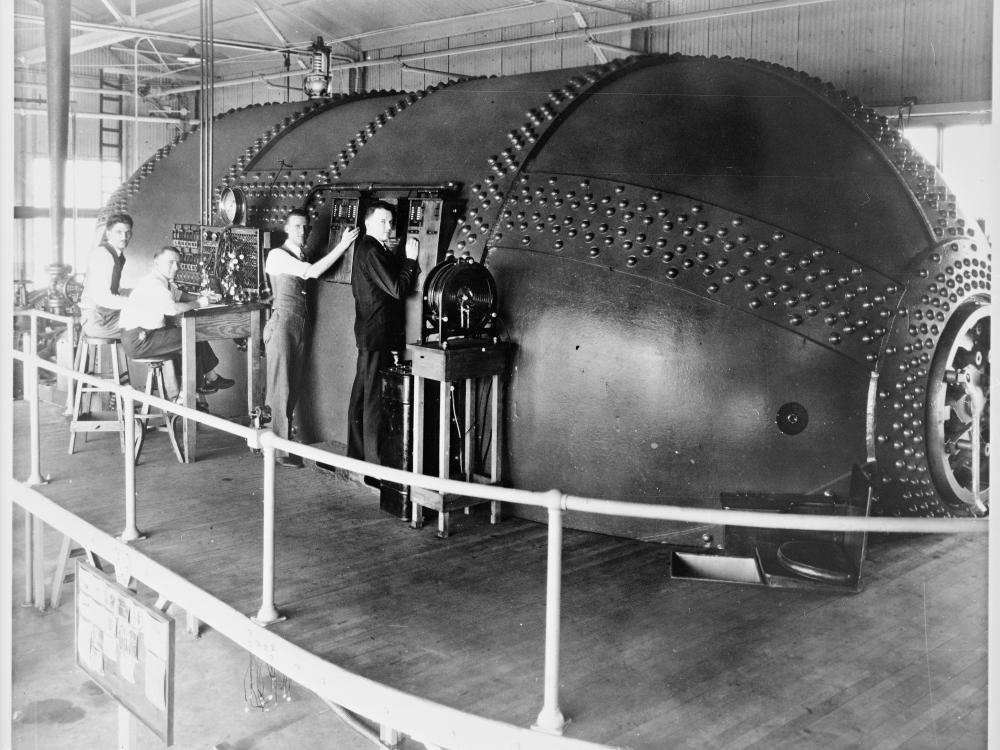
The NACA's Essential Role in Early Aircraft Technology
Dec 06, 2021

Dec 06, 2021
Many are familiar with the Wright brothers’ famous first flight at Kitty Hawk in 1903. But how did aircraft technology develop in the United States after this historic feat? The airplane was only 15 years old when the air mail service was created in 1918. Airplanes were still essentially wood and cloth machines that performed inefficiently.
Europeans led the world in aeronautics after World War I. They developed monococque ("single shell") construction. The aircraft's skin carried most of the aerodynamic load, reducing structural weight. In Germany, Hugo Junkers patented the internally braced cantilevered wing. Adolf Rohrbach built a series of advanced all-metal aircraft, including the Zeppelin E.4/20.
Concerned the United States was rapidly falling behind Europe in aeronautical technology, congress created the National Advisory Committee for Aeronautics, or NACA, in 1915 to supervise and direct American aeronautical research. By the end of the 1920s, the NACA’s efforts were bearing fruit. Spurred by Smithsonian Secretary Charles D. Walcott, the NACA soon became the nation's preeminent aeronautical research organization and attracted some of the nation's most creative engineers.
Named after Samuel P. Langley, third secretary of the Smithsonian, the NACA's Langley Memorial Laboratory opened in 1917. The flight testing facility featured the first pressurized (variable density) wind tunnel. It was used to gather precise data on wing shapes.
The NACA acquired a fleet of 19 aircraft to test their flight characteristics and create new design parameters. It designed equipment to measure air pressure distribution on wings and also began research on engines. One engine the NACA tested was the Liberty V-12. Designed to be light bombers in World War I, the Liberty V-12 was widely used during the 1920s. By 1921 modified de Havilland DH-4 light bombers were being used as mail planes.
Most airplanes in the 1920s used engines cooled by water, such as the Liberty engine. While powerful for their size, water-cooled engines were heavy and unreliable. They required large radiators, which created aerodynamic drag, as well as heavy and complex pumps and plumbing systems, which often leaked. Still, they were more powerful than the bulky air-cooled engines of the time and were widely used on all types of aircraft.
The Havilland DH-4 soon become the symbol of the U.S. Air Mail Service. Liberty engines powered the Post Office's de Havilland DH-4s and most mail planes used by early airlines.
In the late 1920s, the Wright and Pratt & Whitney companies had introduced a new generation of air-cooled engines. Although powerful, the water-cooled Liberty was not as efficient or reliable as these new engines, however it remains one of America's most important contributions to aeronautical technology during World War I.
Cutting-edge research by the NACA and its successor, the National Aeronautics and Space Administration (NASA), solved many of flight's most difficult problems and greatly improved the performance and safety of all aircraft. The NACA/NASA developed some of the most important technological innovations in air transportation. This critical research continues today.

We rely on the generous support of donors, sponsors, members, and other benefactors to share the history and impact of aviation and spaceflight, educate the public, and inspire future generations. With your help, we can continue to preserve and safeguard the world’s most comprehensive collection of artifacts representing the great achievements of flight and space exploration.
We rely on the generous support of donors, sponsors, members, and other benefactors to share the history and impact of aviation and spaceflight, educate the public, and inspire future generations. With your help, we can continue to preserve and safeguard the world’s most comprehensive collection of artifacts representing the great achievements of flight and space exploration.